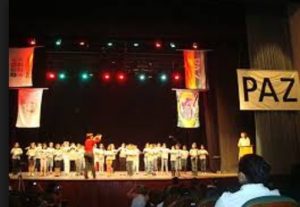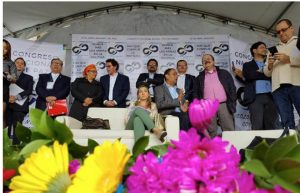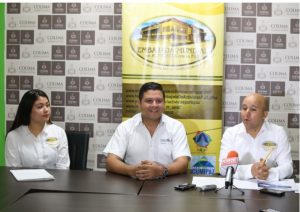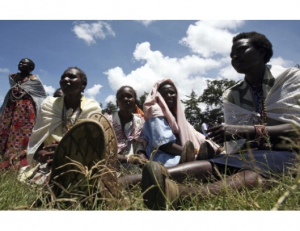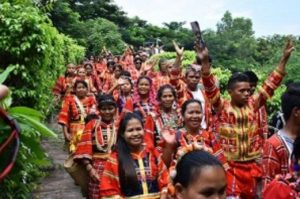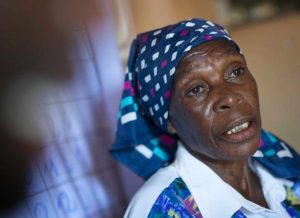. . DEMOCRATIC PARTICIPATION . .
Newsletter May 2017 from International Cities of Peace
The following are new cities of peace this quarter!
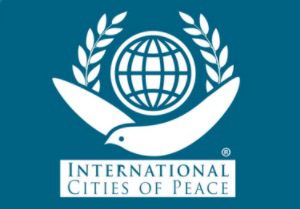
Mathare, Kenya
They know her as “Mama”. Dedicated teacher Emily Makokha founded the Motherway Education Center, and now she and colleagues such as Michael Ochieng Nyawino have established Mathare, Kenya: City of Peace. Mathare is a slum area in Nairobi with 180,000 people, many in great poverty and need. “Mama” has followed her passion for delivering education to this at-risk area. The group’s objectives are amazing, generous, practical, and will bring much peace to a very needy part of Kenya.
WEB PAGE
Jenin, Palestine
IN PALESTINE, a gift to us all. We celebrate a city in northern Palestine as our first City of Peace in that part of the world. Jenin is the home base of Youth Initiative for Peace with leader Osama Rbayah saying, “we work to educate young people and all people in the importance of peace in their lives and we announce Palestine state peace to be the peace springboard to all the world… all the world deserve to live in peace.” The announcement came on Christmas morning — Peace, Om Shanti, Salaam, Shalom — and all of us at International Cities of Peace wish you peace this year and offer good news about a rising grassroots movement to educate rather than retaliate.
WEB PAGE
Durango, Mexico
What better motto could a city of peace envision: “IN THE DEFENSE OF THE RIGHTS OF WOMEN AND THEIR FAMILIES TRAINING FOR WORK AND HUMAN DEVELOPMENT.” Generous of spirit and tireless in her work, Francis Francisca Fernandez and her colleagues have now established Durango City, Mexico as the 154th City of Peace. Francis is President at Federacion De Mujeres Trabajadoras De Oficios Varios Ac, an organization that provides food, medical attention and human rights advocacy for adults and children. I’m not sure how she stretches herself so far, but the photos and stories of her work are extensive and heartfelt. Her vision for the future is an example of how to ensure a person-to-person culture of peace.
WEB PAGE
Herat, Afghanistan
Welcome Abdul Bari Zarifi and his colleagues who have established — through their amazing work in education and human rights — the 3rd largest city in Afghanistan as a city of peace. Profound news! They have formed the Afghanistan 3rd Generation for Human Rights (AGHRO) and have been working for women’s rights, education for children and providing basic necessities. A sophisticated program that might amaze and alter your view of this beleaguered country. Here is their mission in the director’s words: “We felt the pain of war and we know the real necessity and meaning of peace. We are living in the middle of a war zone. Every day hundreds of our people are killing and being killed in front of our eyes. We want to put an end to this killing. We want to bring the voice of our people to the world, saying the Afghan nation wants peace. Afghans need constructive help to make peace a reality.”
WEB PAGE
Banjul, The GAMBIA
Amidst the recent crisis in Gambia where a President would not give up power, peace prevailed due to the demand of the people for democracy. Welcome to Cheikh Top, who with other citizens of the Gambia have created Banjul: City of Peace. Their initiative Peace December “is our way of shining a more proverbial light into the darkness of winter by creating programming aimed directly at combating the darkness within our society. Instead of the darkness of violence, hatred and intolerance, we hope to promote the light of peace, respect, and diversity.”
WEB PAGE
(article continued in right column)
How can culture of peace be developed at the municipal level?
(article continued from left column)
Kasonga-Lunda, D.R. Congo
Welcome to Saki k Jean Claude and his colleagues who have established Kasongo-Lunda, D.R. Congo as a city of peace. “Confronted with conflicts, divisions, regionalism, wars, violence of all kinds, endemic corruption,” said Jean Claude “we decided to create the Cercle des Jeunes Leaders pour la Paix(Circle of Young Leaders for Peace), CJLP in June 2008 in Kinshasa. A non-governmental organization (NGO / NPO involved in various fields PEACE, GENDER, GOVERNANCE, MANAGEMENT OF CONFLICT PREVENTION AND RECONCILIATION & NON-VIOLENCE, HUMAN RIGHTS AND RURAL AND COMMUNITY DEVELOPMENT (training, education, rehabilitation, supervision, safety food, community development, strengthening the technical and organizational capacity).Our actions for peace are carried out with several other independent, denominational and non-denominational organizations.”
WEB PAGE
Lafia, Nigeria
Free HIV/AIDs testing, dialogues on ethno-religious conflicts, youth training — extraordinary real, on-the-ground peace work! Lafia, the capital of Nasarawa State in Nigeria is now a city of peace due to the work of Emmanuel Peter Dadean and his colleagues. With extensive peace-building program, the Foundation for Peace and Meditation is a non-partisan and non-religious service group that helps adults and youth throughout the community. Dadean has a Masters in Peace Studies and Conflict Resolution from the National Open University of Nigeria. Welcome to Dadean and fellow Nigerians. Build the peace in Africa!
WEB PAGE
Amsterdam, The Netherlands
AMSTERDAM, 159! The Netherlands has a long legacy of peacemaking, and now Amsterdam’s Mayor and Council has officially declared as an International City of Peace. Thanks to Mayor Eberhard van der Laan (a Mayor for Peace) as well as peace ambassador Catharina van Staveren who facilitated the Proclamation. Self-proclaiming as a city of peace is a powerful way for the large cities of the European Union to elevate their legacies of peace and to prevent the inaction that led to centuries of war. Remember history, yes, but to take action for peace is needed now more than ever. Please welcome and glorify the Netherland’s and the City of Amsterdam’s great legacy of safety, prosperity and quality of life!
WEB PAGE
Mambasa, D.R. Congo
This movement is definitely changing our future, especially in Africa! We welcome Aimé Waka and the students of the Bankoko Institute as well as the citizens of Mambasa who have established their community in D.R. Congo as a city of peace. Waka is headmaster at the Institute and has a vision to form four peace clubs with 72 schools peace leaders. They hope to train and provide peace education for 1600 students — what an impact that will make on the Democratic Republic of Congo.
WEB PAGE
Islamabad, Pakistan
Welcome to Ambassador Rubina H. ALi and her colleagues of the Global Learning Trust, a multidisciplinary NGO/Trust which started its operations in Gawadar and later on expanded its operations with headquarters in Islamabad. “Our mission is to help build a vibrant community by providing accessible, Educational and Health Programs in an area that can enhance the quality of life for global citizens. We would foster services and activities that will encourage connections among neighbors and inspire civic involvement.” Take a look at the extensive work for peace as they courageously declare Islamabad as a peace city.
WEB PAGE
Berlin, Germany
Welcome to Margret Hoffmann, Sandra Schiermeyer and all the citizens of Berlin, Germany, our newest City of Peace. Margret and her colleagues are from Clans of Peace, a movement dedicated to finding common purpose in healing, community, conscious business, and unity. Germany’s capital is the second most populous urban area in the European Union. Botanical gardens, Sanssouci, Punk music, 138 museums, Berlin is where John F. Kennedy said “Ich bin ein Berliner!” and 26 years later the Wall came down! Celebrating and emphasizing the rich history and legacy of peacebuilding will inspire Berlin’s future generations.
WEB PAGE


